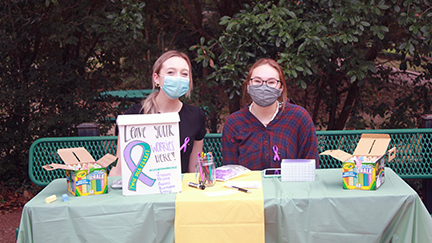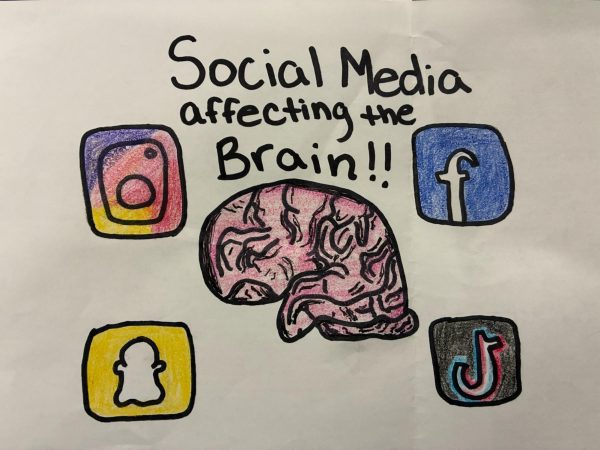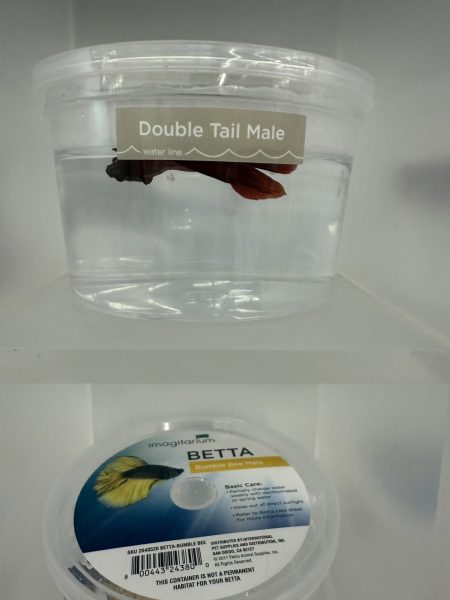Suicide awareness/mental health

Grace Murphy (left) and Leilani Beard (right) in the TWHS courtyard manning the chalk station.
This past month was Suicide Awareness Month. I had the pleasure of spreading awareness through a school project with the main topic, SHARE. I learned through this project that people who have struggled with mental illness, whether it be themselves or a loved one, have felt relief when telling their story. My partner and I were able to create a safe environment for students to share their stories, so that others can see that they aren’t the only ones struggling, and that the pain will end. Suicide should not just be a topic that is talked about for one month, and then ignored for the rest, it should be an accessible topic whenever needed.
Mental health has been a problem facing many young children, even some who are still in elementary school. My generation, and many before, have been taught to conceal many of our feelings because it’s not the proper way of thinking or it seems disrespectful to complain about such little inconveniences in our lives. We shouldn’t be bothered by expressing our honest feelings, we should be bothered by the fact that suicide is the second leading cause of death in children between the ages of 10-19, behind that of unintentional death.
It’s become a trend, you could say, to act like you don’t care, say the things that you’re supposed to respond with and be this person that everyone else is supposed to like. We shouldn’t be scared to talk about our feelings. I believe that this was taught to us by our parents. I’m not saying that our parents are the root cause for all suicide, for some it is, but for most it goes deeper. Our parents taught us at a young age to act respectful, to not be too headstrong on our beliefs, to be liked by those around us so that we can have friends, develop self control, and always look on the bright side.
To those who struggle with mental illness, we see, do and overthink on specific events in our life that have, are and could occur. When our parents say things like this to us, it makes it seem like our problems aren’t good enough to have, or that our problems aren’t as important as others who are less fortunate than we are. In some way that may be true, but we should still be allowed to be open about our problems and be able to talk about what’s bothering us. The worst thing to do to a person with mental illness is to shut them down and not let them speak about their feelings. This can cause triggers which will lead to self harm and even closer to suicide. We never know what someone may be going through, so we need to be careful with our words and allow people to be vulnerable with us, and we with them.
The hardest part about talking to people about mental health and suicide is starting the conversation. Many parents, as well as teens, want to believe that their child or their friend is living a great life and has no care in ending it. This idea begins to cloud the judgement of changes in the teens behavior. A child who begins to skip one meal, or begins to stop constantly hanging out with their friends may be signs of early onset depression. Especially nowadays, with Covid-19 being our reality, many children don’t have access to the people they trust most to talk about their mental health.
There are many ways to ease into the conversation without being too upfront or using trigger words. As a suicidal teen myself, I have learned some phrases that helped me open up to people. The best one is “What’s going on in your life right now?” it gives them the option to tell you certain aspects of their life, either the happy ones or the not so happy, and then you can ask them to elaborate more on the ones you believe might be more beneficial to talk about. If they are struggling with something, ask to elaborate more on that topic so you can help them solve their problem. If they have very exciting things happening in their life, elaborating on those events will help brighten their day. Starting the conversation is the first, and hardest part after that it’s just trust and comfort that you will bring with the conversation.
Teen suicide has become adolescents suicide with ages starting as low as 10. The first step of lowering the curve is to talk, start the conversation and be comfortable speaking about mental health.
Your donation will support the student journalists of The Woodlands High School. Your contribution will allow us to purchase equipment and cover our annual website hosting costs.






